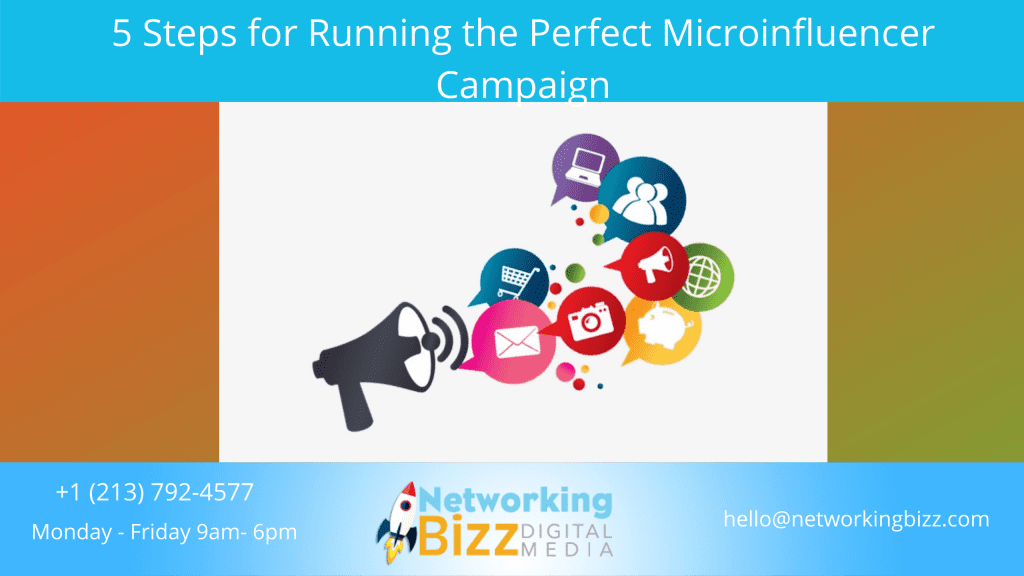
It doesn’t matter how great your product is if no one knows about it. That’s why every business owner needs to adapt a marketing strategy early on. However, if you’re a one-person show and have a limited marketing budget, you need to be strategic with where you invest your energy and money. There are many great marketing tools available for small businesses, but one we definitely recommend considering is influencer marketing.
Being an influencer is so much more than posting cool photos and stories.
 Social media influencers are people who have the ability to affect the purchasing decision of others by promoting or recommending products.
Social media influencers are people who have the ability to affect the purchasing decision of others by promoting or recommending products.
Regardless of the number of followers, what’s common for many influencers is that they’re authentic, credible, and have a loyal fan-base. Influencers are seen as an authentic alternative to traditional advertising tactics. That’s why collaboration with an influencer is a great way for brands of any size to drive engagement, boost brand awareness, and reach new audiences.
Influencers with smaller audiences are more likely to respond to each comment and create a more personal connection with every follower. This makes the influencer appear as an online friend, rather than an unapproachable public figure. With incredibly loyal follower bases, microinfluencers can help support goals above and beyond simply driving brand awareness.
Brands can also leverage multiple microinfluencers at once to share more voices rather than spending their whole influencer budget on one celebrity. Glossier, the makeup brand beloved by millennials, turned to their own fanbase of highly engaged followers and commenters to become their most powerful brand ambassadors.
The most effective influencer relationships happen when brands have a clear idea of their goals and partner with the right influencers for results-driven, strategic campaigns.
Interested in working with microinfluencers? We’ll walk you through creating your campaign step by step.
Step 1: Define your campaign goals
 For any influencer campaign, it’s important to define your goals from the beginning and communicate them clearly to your potential partner. Microinfluencers typically have a niche following and are highly trusted by their audience, so their recommendations carry a lot of weight. They are highly effective for getting more interactions, boosting engagement, and increasing conversions. If you’re just focusing on one of these goals or a combination, microinfluencers are the way to go.
For any influencer campaign, it’s important to define your goals from the beginning and communicate them clearly to your potential partner. Microinfluencers typically have a niche following and are highly trusted by their audience, so their recommendations carry a lot of weight. They are highly effective for getting more interactions, boosting engagement, and increasing conversions. If you’re just focusing on one of these goals or a combination, microinfluencers are the way to go.
If you want more interactions on one of your specific brand channels, you need to determine your baseline on that account and what percent increase you want to see. The average engagement rate varies by platform and by industry; for Instagram, the average engagement rate is 1.60%.
If your goal is to drive more sales, you need to figure out if you’re going to focus on a hero product, a new product, or a bundle and then set your goals accordingly.
When you want to drive more conversions, figure out what call-to-action is your focus when defining your campaign.
Step 2: Find the right microinfluencers
 Once you’ve established your campaign goals, you now need to do the research on which influencer can help you reach them.
Once you’ve established your campaign goals, you now need to do the research on which influencer can help you reach them.
Finding influencers that are a fit for your brand and campaign takes research and vetting. If you know who your target audience is and their demographics, you already have a blueprint for finding your perfect influencers. Depending on your budget, you can search for influencers yourself or use an influencer marketing platform or agency. Influencer marketing platforms offer a range of solutions and prices—from self-serve tools to more robust resources like the Pixlee platform. Influencer marketing agencies can step in to manage the process end-to-end, from discovering potential partners to vetting them and running the campaigns.
How and where to find an influencer for your campaign
An important question to answer as you start looking for the partner: which social media platform does your target demographic use the most? Decide on one channel and look for the influencer there.
Instagram is a classic for influencer marketing, but it’s worth looking into other channels too. YouTube will be perfect if you create a lot of video content for your brand. While TikTok is a relatively new platform, it’s growing quickly and gaining popularity among millennials; business-to-consumer campaigns could be potentially very effective there.
Step 3: Build relationships
 Reaching out to influencers is more than just shooting off an email template asking if they want to partner with you. When researching potential influencers, you’re not only evaluating them—you’re also getting to know them. It’s crucial to communicate clear expectations early in the conversation. This goes double for payment considerations.
Reaching out to influencers is more than just shooting off an email template asking if they want to partner with you. When researching potential influencers, you’re not only evaluating them—you’re also getting to know them. It’s crucial to communicate clear expectations early in the conversation. This goes double for payment considerations.
Many influencers will have predetermined rates they use when partnering with brands. If that’s not provided upfront, ask the potential partner what they typically charge. If you plan to request product reviews and promotion in exchange for free products, state that as soon as possible. Remember—influencers are professionals! While microinfluencers are usually a more cost-effective option, don’t expect anything for free.
Step 4: Start creating content
 One of the reasons for the boom in influencer marketing is because the content they create is so impactful; 93% of consumers are influenced by UGC when they’re making a purchase decision. User-generated content is effective because it’s authentic and customers relate to it more than branded content.
One of the reasons for the boom in influencer marketing is because the content they create is so impactful; 93% of consumers are influenced by UGC when they’re making a purchase decision. User-generated content is effective because it’s authentic and customers relate to it more than branded content.
Partnering with influencers to create UGC is at the core of every influencer campaign. Most of the posts shared by influencers as part of a sponsored campaign will include a hashtag to differentiate it from their usual posts. You can search these hashtags on social media to see examples of sponsored posts from other businesses and brands.
Depending on your campaign strategy, you may be focusing on pictures, videos, or written content like blog posts or reviews. Whatever type of content you want, be sure to communicate that clearly to the influencer so everyone’s on the same page.
Step 5: Track results
 When it comes to marketing campaigns, it’s all about impact. Likes and comments are really exciting—especially if you start racking them up early in a campaign. But, the real metrics you need to focus on are measuring the return on your investment. There are several ways to track influencer campaign performance beyond engagement metrics, especially if you’re focusing on conversions and sales.
When it comes to marketing campaigns, it’s all about impact. Likes and comments are really exciting—especially if you start racking them up early in a campaign. But, the real metrics you need to focus on are measuring the return on your investment. There are several ways to track influencer campaign performance beyond engagement metrics, especially if you’re focusing on conversions and sales.
- Include unique hashtags in your influencer campaigns to make it easy to identify and collect posts from a specific campaign.
- Give influencers links with unique URLs so you can track the referrals to your site. One way to do this is by adding UTM parameters to your links. Google Analytics offers a guide on UTM links that you can use to get started for free!
- Use discount codes for each campaign and/or influencer to measure the sales that are generated.
- Request performance reports from your influencers’ social media accounts to get a full picture of how your campaign is doing. Many influencers have business accounts for their social media and can pull native reports from the platform to provide data on daily and weekly reach, impressions, and demographics.
- Once your campaigns are up and running, it’s important to keep an eye on the metrics so that you can adjust if necessary.
- Schedule regular check-ins with your influencers to follow the campaign progress and provide any support they may need.
- Check to see if the influencer is getting any questions in the comment section about your brand or product in case you need to clarify anything.
- Communicate with your influencers if it seems like you’re not getting the results you want since they know their followers best.
Once the campaign ends, set up a call with your influencer to determine how the campaign performed against your goals, what the results were, and how you both felt about the partnership. Ask them if they have any advice for future campaigns or ideas for unique ways to engage with their followers. If you’re interested in working with the influencer long term, consider sending them a thank you gift to help strengthen the relationship.
Finally
Many people think influencers have to be celebrities or have hundreds of thousands of followers, but, as we learned, they’re not the only influencers out there. Microinfluencers may have fewer followers, but don’t underestimate their power—with highly engaged, extremely loyal follower bases, microinfluencers can help spur engagement and increase conversions.
By planning a goal-driven campaign and working with the best-fit influencers for your brand, you can run effective influencer campaigns with measurable results!
